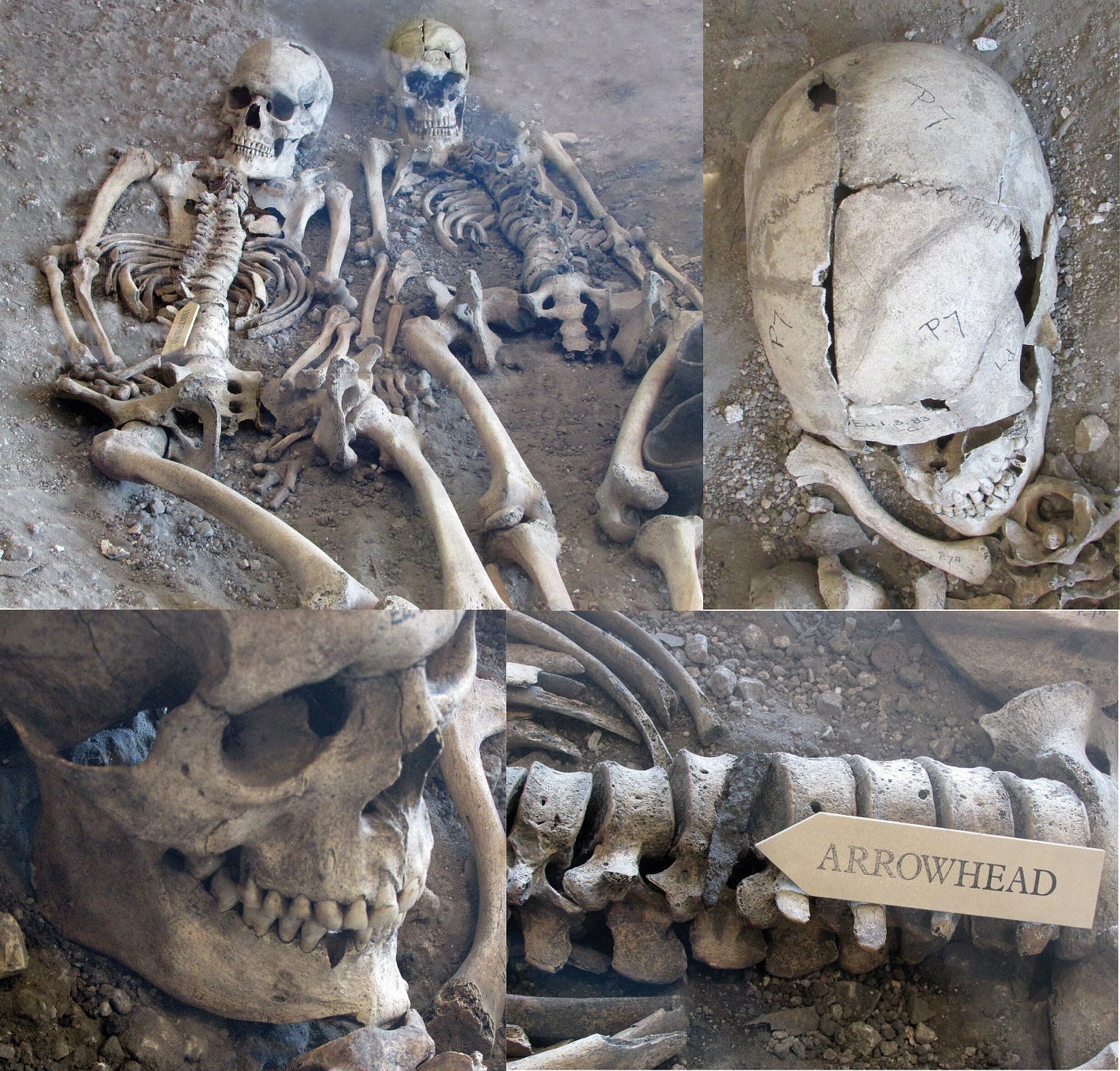Bodies discovered at archaeological site shed light on the Roman massacre that never happened
Latest News
Reported by Phys.org:
A new study by archaeologists at Bournemouth University has revealed that bodies recovered from a "war-cemetery," previously attributed to the Roman Conquest of Britain at Maiden Castle Iron Age hillfort in Dorset, did not die in a single dramatic event. The work is published in the Oxford Journal of Archaeology.
A re-analysis of the burials, including a new program of radiocarbon dating, has revealed that, rather than dying in a single, catastrophic event, individuals fell over periods of lethal violence spanning multiple generations, spread across the late first century BC to the early first century AD. This is suggestive of episodic periods of bloodshed, possibly the result of localized turmoil, executions or dynastic infighting during the decades leading up to the Roman Conquest of Britain.
BU's Dr. Martin Smith, associate professor in forensic and biological anthropology, who analyzed the bodies, said, "The find of dozens of human skeletons displaying lethal weapon injuries was never in doubt, however, by undertaking a systematic program of radiocarbon dating, we have been able to establish that these individuals died over a period of decades, rather than a single terrible event."
The 'war-cemetery' of Maiden Castle Iron Age hillfort in Dorset is one of Britain's most famous archaeological discoveries. Discovered in 1936, many of the skeletons unearthed had clear evidence of trauma to the head and upper body, which dig director at the time, Sir Mortimer Wheeler, suggested, were "the marks of battle," caused during a furious but ultimately futile defense of the hillfort against an all-conquering Roman legion.
Wheeler's colorful account of an attack on the native hillfort and the massacre of its defenders by invading Romans, was accepted as fact, becoming an iconic event in popular narratives of Britain's "Island Story."
Principal academic in prehistoric and Roman archaeology at BU, and the study's dig director, Dr. Miles Russell said, "Since the 1930s, the story of Britons fighting Romans at one of the largest hillforts in the country has become a fixture in historical literature.
Read more here.



